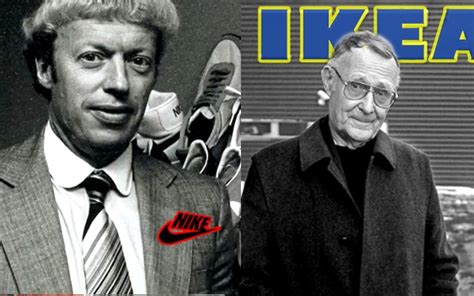Ole Kirk Christiansen, a Danish carpenter, is best known for founding the iconic toy brand, the LEGO Group. Born on April 7, 1891, in Filskov, Denmark, Christiansen's journey to creating one of the world's most recognizable and beloved brands was marked by hard work, dedication, and a passion for craftsmanship. Initially, Christiansen worked as a carpenter, building houses and furniture, but after losing his job due to the Great Depression, he began producing wooden toys in 1932 to make ends meet.
Early Years and the Birth of LEGO

Christiansen’s decision to start producing wooden toys was a pivotal moment in his career. Two years later, in 1934, he founded the company that would eventually become the LEGO Group. The name “LEGO” comes from the Danish phrase “leg godt,” which means “play well.” This name reflected Christiansen’s vision for his company: to create toys that would inspire children to use their imagination and creativity. In 1947, Christiansen began exploring the possibility of producing plastic toys and, in 1949, created the iconic interlocking brick that has become synonymous with the brand.
Innovative Designs and Manufacturing
The introduction of the interlocking brick was a game-changer for the company. The brick’s design allowed children to build and create structures with ease, and its versatility sparked a new era of creative play. Christiansen’s commitment to quality and innovation led to the development of a wide range of toys and play sets, cementing the LEGO Group’s position as a leader in the toy industry. By the time of his death on March 11, 1958, Christiansen had laid the foundation for a global brand that would continue to inspire generations of children and adults alike.
| Year | Event | Impact |
|---|---|---|
| 1932 | Started producing wooden toys | Marked the beginning of Christiansen's toy-making career |
| 1934 | Founded the LEGO Group | Established the company that would become a global brand |
| 1947 | Began exploring plastic toy production | Paved the way for the creation of the iconic interlocking brick |
| 1949 | Created the interlocking brick | Revolutionized the toy industry with a versatile and creative building system |

Key Points
- Ole Kirk Christiansen founded the LEGO Group in 1934, initially producing wooden toys before transitioning to plastic toys.
- The iconic interlocking brick, introduced in 1949, was a pivotal innovation that transformed the toy industry.
- Christiansen's vision for the LEGO Group was centered around creative play and inspiring children to use their imagination.
- The company's commitment to quality and innovation has made it a leader in the toy industry, with a global brand recognized by millions.
- Christiansen's legacy extends beyond the LEGO Group, with his emphasis on creative play and innovative design continuing to inspire new generations.
Legacy and Impact

Ole Kirk Christiansen’s impact on the toy industry cannot be overstated. His innovative designs, commitment to quality, and emphasis on creative play have made the LEGO Group a household name. Today, the company continues to inspire children and adults alike with its wide range of toys, play sets, and experiences. Christiansen’s legacy serves as a testament to the power of innovation, hard work, and a passion for creativity.
Evolution of the LEGO Group
Since Christiansen’s passing, the LEGO Group has continued to evolve and expand, introducing new products, themes, and experiences. The company has remained committed to its core values of creativity, quality, and play, while also embracing new technologies and trends. From the introduction of themed play sets like LEGO Star Wars and LEGO Harry Potter to the development of digital platforms like LEGO Games and LEGO Movies, the company has consistently pushed the boundaries of creative play.
The LEGO Group's impact extends beyond the toy industry, with the brand becoming a cultural phenomenon. LEGO conventions, fan communities, and user-generated content have created a global network of enthusiasts who share and celebrate their love for the brand. The company's commitment to philanthropy and social responsibility has also made a significant impact, with initiatives like the LEGO Foundation supporting children's education and development programs around the world.
What inspired Ole Kirk Christiansen to start producing toys?
+Christiansen's decision to start producing toys was inspired by the need to make ends meet during the Great Depression. He began producing wooden toys in 1932, which marked the beginning of his toy-making career.
What is the significance of the interlocking brick in the history of the LEGO Group?
+The interlocking brick, introduced in 1949, was a pivotal innovation that transformed the toy industry. Its versatility and creative potential sparked a new era of play and cemented the LEGO Group's position as a leader in the toy industry.
How has the LEGO Group evolved since Ole Kirk Christiansen's passing?
+Since Christiansen's passing, the LEGO Group has continued to evolve and expand, introducing new products, themes, and experiences. The company has remained committed to its core values of creativity, quality, and play, while also embracing new technologies and trends.
In conclusion, Ole Kirk Christiansen’s legacy is a testament to the power of innovation, hard work, and a passion for creativity. The LEGO Group, founded by Christiansen in 1934, has become a global brand recognized by millions, inspiring children and adults alike with its wide range of toys, play sets, and experiences. As the company continues to evolve and expand, its commitment to quality, innovation, and creative play remains at the heart of its mission, ensuring that Christiansen’s vision will continue to inspire generations to come.
